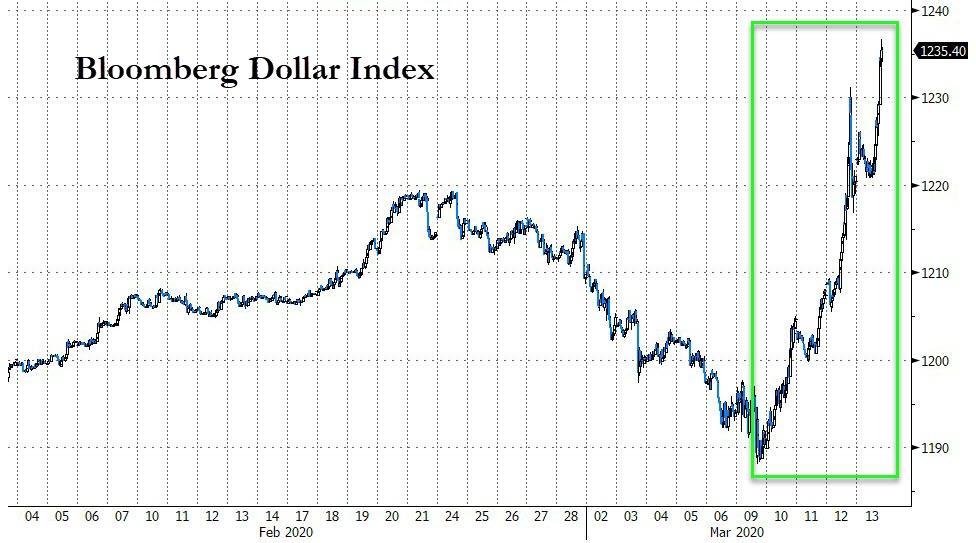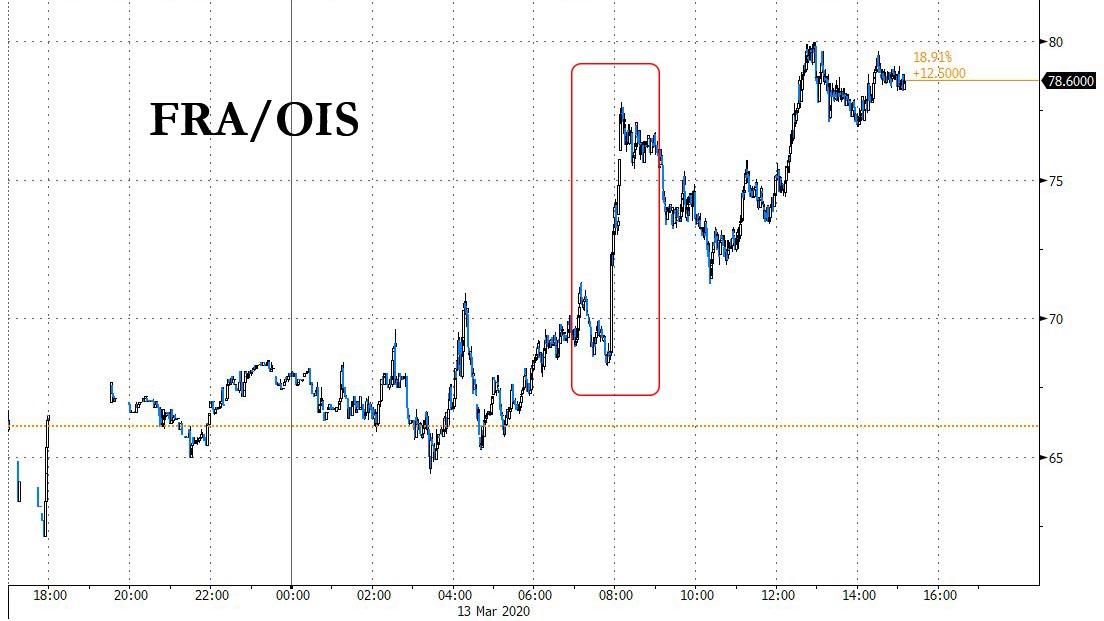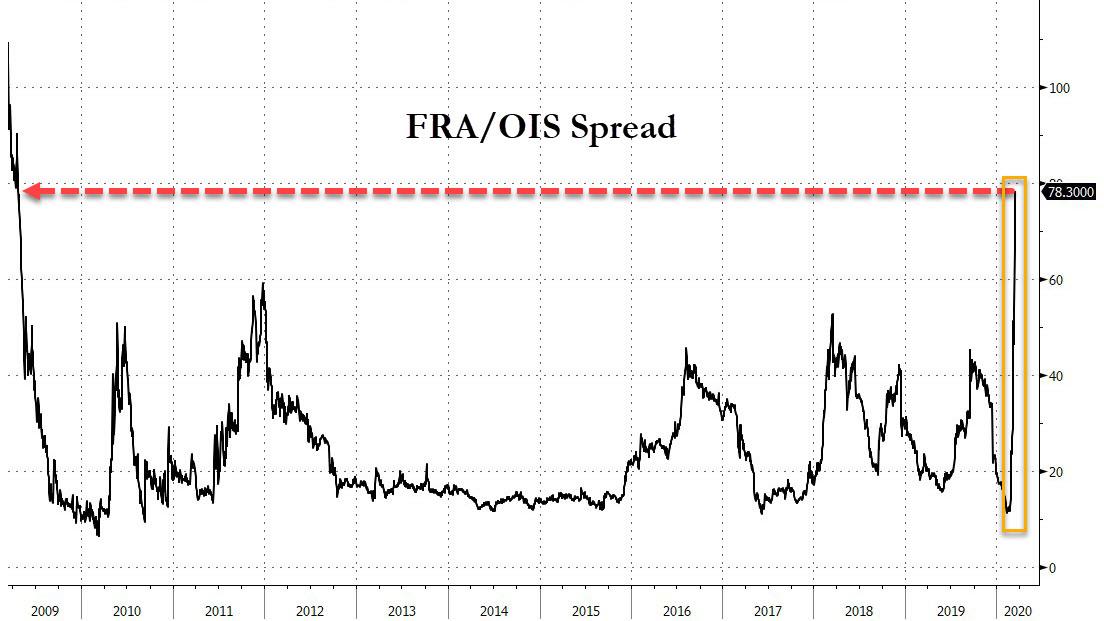Something Is Breaking: Fed Fails To Ease Epic Dollar Shortage As FRA/OIS Goes Parabolic
One certainly can’t blame the Fed for trying: after firing a repo “bazooka” yesterday, which could provide up to $5 trillion in monthly liquidity in exchange for eligible pledged securities, and following that up with an emergency QE operation today when the Fed announced it would buy up to $37 billion in securities across the curve from domestic and foreign banks, risk assets have staged a modest rebound after the biggest selloff since Black Monday, and the relentless selloff of Treasurys, likely prompted by historic risk parity fund unwinds, has moderated.
But where the Fed has catastrophically failed, is in addressing the most important task facing it this moment: easing the unprecedented dollar shortage which is getting worse by the minute.
Despite the barrage of central bank actions meant, more than anything, to ease bank fears that dollars will not be available when needed to rollover trillions in maturing debt, the dollar has seen a relentless surge higher, with today’s move shocking in its severity and consistency.
Yet while one can argue that the dollar is traditionally a flight to safety in times of stress, the fact that the dollar is surging today even as stocks are soaring and the Dow is about to be up 1,000 suggests that something else is going on.
That something else is the relentless move higher in the 1st IMM FRA/OIS, which was supposed to ease after today’s massive term repo operations, yet which spiked when it emerged that there was barely any usage early this morning, arguably due to regulatory limitations and concerns about liquidity coverage ratios.
As a result, the FRA/OIS, which is traditionally a closely-watched indicator of interbank dollar funding stress (the higher the spread, the worse the liquidity shortage), has inexplicably soared to 80bps, above all prior crisis levels hit in the past decade and back to levels last seen during the financial crisis.
The bottom line is that whatever the Fed is doing to inject much needed dollar liquidity, is not working.
So what should the Fed do? One possible answer comes from Zoltan Pozsar, Credit Suisse’s iconic repo market expert, who last week wrote an article on “Covid-19 and Global Dollar Funding”, which first laid out the sequence of stresses that the escalating funding crisis would take, all of which are materializing as expected…
- peripheral cross-currency bases (e.g., KRW/USD) as missed payments grow;
- €/S and $/¥ bases as reserve managers stop lending in the FX swap market, to help banks and banking systems deal with dollar outflows in their jurisdictions;
- U.S. dollar Libor-OIS spreads as banks start fixing their LCRs that are being damaged by outflows of operating deposits and corporate credit lines; and lastly,
- o/n GC repo markets as FX reserve managers and large banks are scrambling to turn collateral into cash to fund banks’ and corporate customers’ liquidity needs.
… and then concluded that his “recommendation for the Fed would be to combine rate cuts with open liquidity lines that include a pledge to use the swap lines, an uncapped repo facility and QE if necessary.“
Also recall that this recommendation took place before oil prices collapsed this weekend following the Saudi oil price war, crushing the petrodollar recycling system and crippling oil exporters’ dollar funding, adding even more pressure on dollar funding. In short, the situation has only gotten far, far worse now.
Tyler Durden
Fri, 03/13/2020 – 15:27
via ZeroHedge News https://ift.tt/33edj6i Tyler Durden


